"Good teaching may overcome a poor choice of technology but technology will never save bad teaching” (Tony Bates)
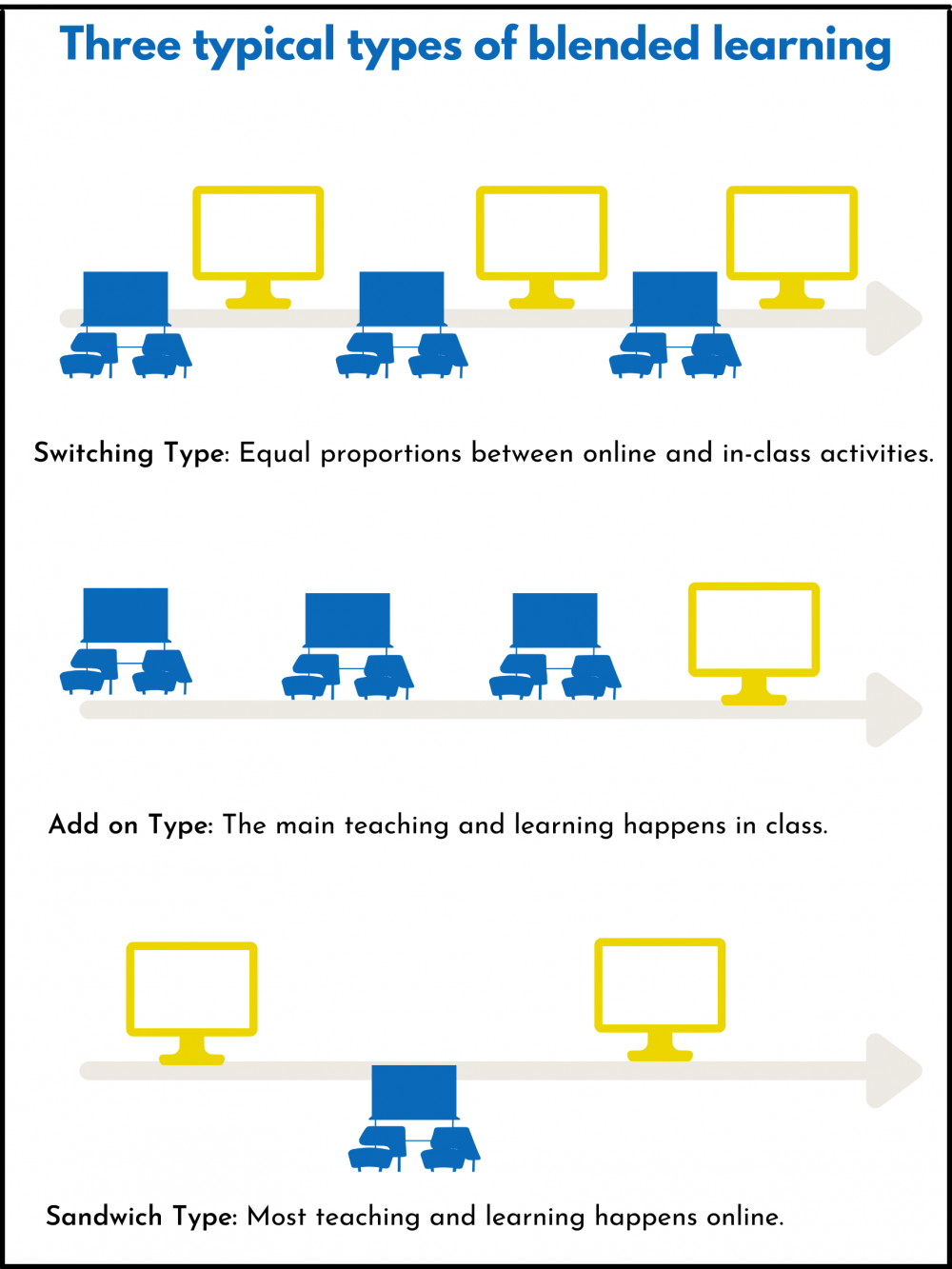
Detailed definition: “Blended course designs involve instructor and learners working together in mixed delivery modes, typically face-to-face and technology mediated, to accomplish learning outcomes that are pedagogically supported through assignments, activities, and assessments as appropriate for a given mode and which bridge course environments in a manner meaningful to the learner” (McGee & Reis, 2012, p. 9).
For instructors it ...
-
extends learning time and promotes greater engagement with content whereby student learning outcomes are enhanced.
-
builds in flexibility for students while deepening their learning through specific activities.
-
helps you gauge student learning and progress as it happens to adapt your in-person teaching accordingly.
-
creates inclusive online spaces, in which all students engage and contribute equally thus, potentially reducing attrition rates.
-
enhances and fosters professional learning communities and team-building in your course through specific collaborative online activities.
-
provides cost and resource saving through digital fair dealings packages and/ or Open Access materials and Open Educational Resources
-
streamlines your communication with individual students and the entire course population through the use of online communication tools.
-
improves student autonomy, reflection, and research skills.
-
provides you with greater flexibility.
Students can ...
-
prepare on their own time and at their own pace.
-
actively connect previous knowledge to course content, prepare for class activities before a class or revise, apply or deepen knowledge, skills and attitudes gained during class time through additional learning activities online.
-
access spaces in which to share progress of their own learning, negotiate meaning of course goals and assignments, and crowdshare solutions to problems as they arise.
-
develop self-directed and independent learning skills.
-
interact and collaborate with peers and the instructor in multiple ways.
As the instructor, you will also need to broaden your pedagogical repertoire to include more facilitation methods that guide students in applying knowledge, practicing skills, and reflecting on their learning. You will need to build solid digital competencies in order to support your students online, including the curation of digital content, researching information on the internet, communicating and cooperating within online environments, stimulating online discussion and exchange.
A well designed pedagogical facilitation is crucial to the success of implementing blended learning in your courses. You as the instructor as well as your students will face new challenges.
Since the ratio of self-learning units is higher, your students will need to develop or enhance their independent learning skills including the skills to plan, organize, conduct, control, motivate, and sustain their own learning.
There is no one way to approach blended learning.
However, one widely adopted model is the Community of Inquiry framework by Garrison, Anderson, and Archer, 2000. The framework illustrates a process for creating a rich and meaningful (collaborative-constructivist) learning experience through the development of three interdependent elements – social, cognitive, and teaching presence (Garrison, Anderson, & Archer, 2000) as shown below.
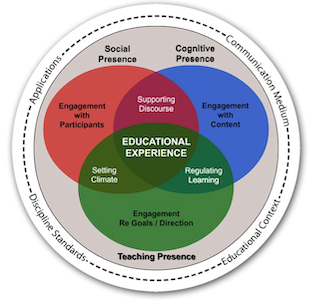
Figure 1: Community of inquiry framework. Reprinted from The Community of Inquiry, by T. Anderson, R. Garrison, & W. Archer 2000. Retrieved from https://coi.athabascau.ca/wp-content/uploads/2014/07/COI-ANIM.swf. Reprinted by permission.
Another framework derived from instructional design, Merrill’s First Principles of Instruction (2002) states:
-
Learning is promoted when learners are engaged in solving real-world problems.
-
Learning is promoted when existing knowledge is activated as a foundation for new knowledge.
-
Learning is promoted when new knowledge is demonstrated to the learner.
-
Learning is promoted when new knowledge is applied by the learner.
-
Learning is promoted when new knowledge is integrated into the learner’s world.
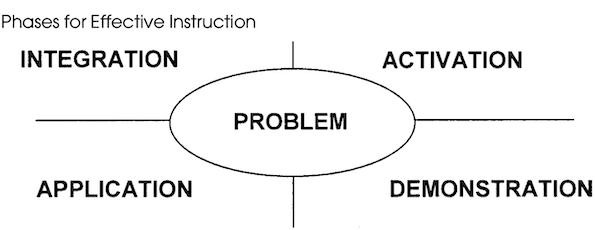
Figure 1: Merrill’s First Principles of Instruction framework. Reprinted from First Principles of Instruction, by D. Merrill, 2002. Retrieved from https://link.springer.com/content/pdf/10.1007/BF02505024.pdf.
There are a variety of blended learning approaches you could model. Blended learning incorporates various active learning strategies, which may include any of the following:
-
Self-directed learning
-
Assignment-based learning
-
Project-based learning
-
Inquiry-based learning
-
Experiential learning
-
Group and individual work
-
Flipped Classroom
-
Reflection
To learn more about how to apply these frameworks and blended learning approaches to your course, please book an appointment with a Teaching Development Facilitator by emailing: teachingsupport@uleth.ca .
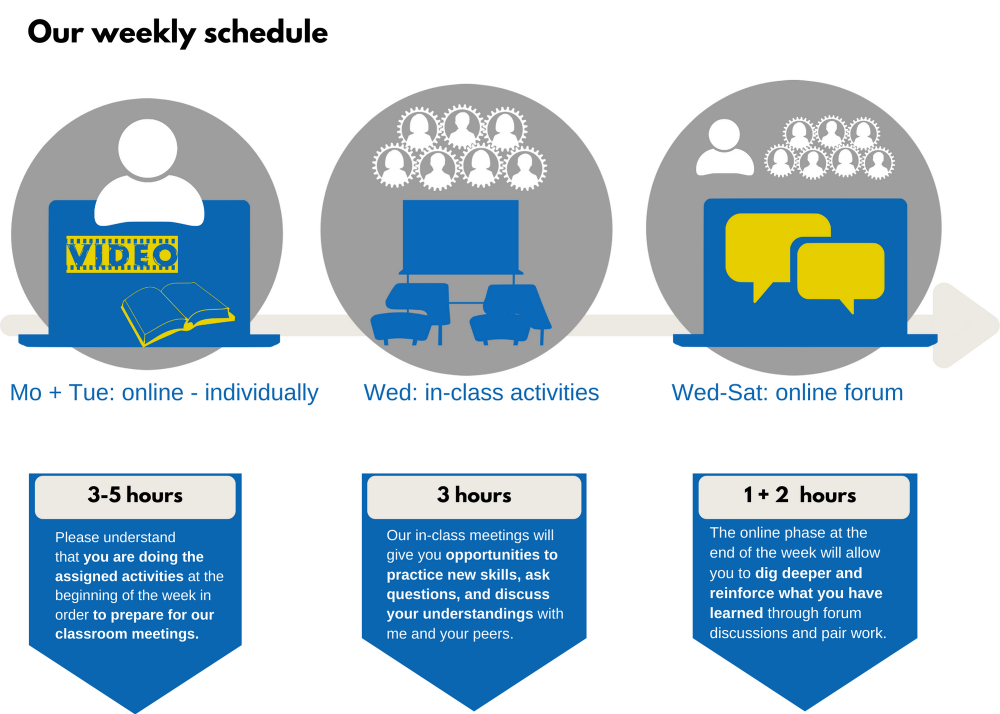
There is no set number of tools required for a blended learning course. Simply introducing new technologies into the classroom is not sufficient for creating a blended learning environment. Technology is a tool or system used to solve problems. A tool becomes a technology when it is applied with some intention to meet some human need; the definition of an educational technology will include its teaching or learning purpose. In many cases, this will mean delivering learning content as various forms of media (e.g., text, video, games), but it can also include social or collaborative activities (such as discussion boards or videoconferencing) or the creation of artifacts by learners (assessment activities or e-portfolios). The purposes we identify and the problems our technologies are meant to solve reflect our values and priorities as educators; our technological choices should go beyond whatever is trendy or new.
Common Tools
-
Moodle
-
Online Discussion Boards
-
-
Digital Textbooks
-
Digital Annotation (e.g., Hypothes.is)
-
Blogs & Wikis
-
Collaborative content sharing platforms (e.g., Padlet)
-
Polling (e.g., ePoll)
-
Simulations
-
Gaming
Universal Design for Learning (UDL) is a curriculum design framework that is used to create inclusive and accessible learning environments.
The three principles of UDL are:
-
Provide multiple means of engagement
-
Provide multiple means of representation
-
Provide multiple means of action and expression (CAST, 2018).
Benefits of UDL:
-
A reduction in the need for, and time required to arrange, individual accommodations.
-
The proactive design supports a more diverse student population.
-
A greater opportunity for learners to more fully demonstrate knowledge.
-
Better development of more self-aware and knowledgeable learners.
-
Meeting the Accessibility for Ontarians with Disabilities Act is easier. (Mohawk College, n.d.).
Applying these principles to your blended learning course will help you support the individual learning needs of all of your students. To learn more visit: https://udlguidelines.cast.org
Day 1 Sample Class
Pre-Class Online Lecture: Students watch a short (10-20 min) pre-recorded video lecture that explains theory, core concepts, and demonstrated applications.
Pre-Class Questions: Each video lectured is followed by a series of questions (3-5) that invite students to think critically about the lecture content. Students submit their answers prior to class. This allows time for the instructor to review student answers and better prepare for the in-person class. *Optional: Instructor can provide individual feedback to student responses if time allows.
In-class activities: Each class starts with the instructor inviting students to ask questions related to the video lecture. Next, the instructor gives another short lecture. The instructor then presents (3) problem-solving questions. Students work individually and then discuss their answers in a group. The instructor invites random group members to answer the question(s). Instructor provides clarification and answers student questions.
NOTE: This basic structure could act as a course planning template and be slightly modified on a weekly basis. Modifications could incorporate active learning strategies (shared above in Question 2) ensuring that in every class students’ have an opportunity to actively engage with the instructor, one another, and the course material.
Day 2 Sample Class (with modification)
Pre-Class Online Lecture: Students watch a short (10-20 min) pre-recorded video lecture that explains theory, core concepts, and demonstrated applications.
Pre-Class Student Questions: As evidence of watching the pre-recorded lecture and to encourage student interaction, students are asked to post two thought-provoking questions that stimulate dialogue on an online discussion board.
In-class activities: Instructor invites students to ask questions about pre-recorded lecture and provides necessary clarifications. Instructor puts students in small groups and invites them to choose two questions to discuss from the discussion board.
Post-class online discussion: Students are expected to respond individually to two discussion questions and provide research to support their answers. Students are graded on their responses.
There are many different techniques to approach this type of learning. The most common are:
Flipped model
With this blended learning model, instructors prioritize active learning during in-class learning sessions by providing students with asynchronous resources, training materials, recordings and presentations before the in-person class. Instructors can share content in advance via Moodle or any other learning platform or application.
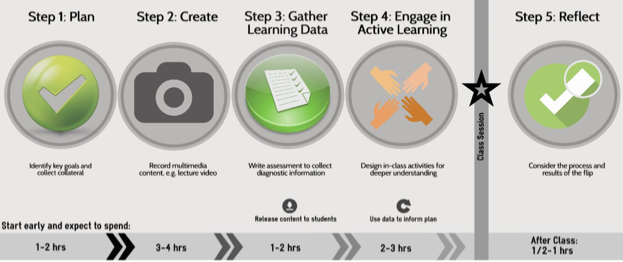
Face-to-face driver model
This is the closest to traditional classroom delivery. Students log into a webinar or class online, such as zoom or other applications. The learning and assessment happen online while attending an in-person class. Assignments are set for after class. Instructors can provide training sessions, and share assignments online with students before or after class.
Enriched virtual
An alternative to full-time online learning. It allows students to complete most of the course requirements online, while they can also attend webinars for face-to-face sessions with their instructor. Students experience more flexibility to complete their requirements at their own pace.